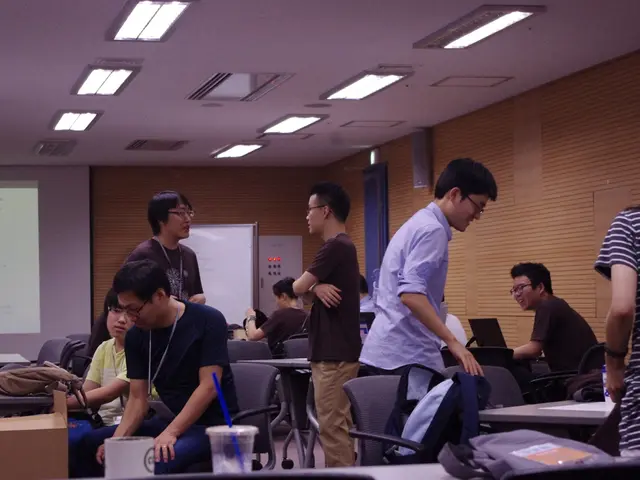Artificial intelligence may also contribute to an expansion of economic disparity and potentially eliminate low-skilled employment, according to a specialist's opinion.
In a recent discussion, former Secretary of Transportation Pete Buttigieg voiced concerns about the economic downsides of artificial intelligence (AI), particularly job displacement. These concerns were echoed by Erik Brynjolfsson, a senior fellow at Stanford's Institute for Human-Centered Artificial Intelligence.
Brynjolfsson predicts that in three to four years, half of entry-level jobs might not exist due to AI. He warns that the transition to more automation could lead to dislocation and economic disparity, similar to the industrial Midwest.
As AI is being integrated into day-to-day operations of companies, concerns about job elimination are rising. However, Brynjolfsson believes that there will be a premium for certain kinds of engineering, math, science, and coding skills. He also emphasizes that AI cannot replace human skills like communication and creativity.
In fact, Brynjolfsson predicts that jobs are transitioning in both directions, with some disappearing and new ones being created. He believes that there could be opportunities for more creative, artistic, and interpersonal work in the future.
To mitigate the risks of displacement, Brynjolfsson suggests that worker retraining and understanding the skills that will become important in the future are crucial in managing the transition. Proactive reskilling and upskilling initiatives are essential to transition workers into new or augmented roles rather than simply displacing them.
When integrating new technologies into the workforce, the most urgently needed areas to address are job displacement and workforce transitions, development of human-centered skills, addressing widening economic inequality, infrastructure and connectivity gaps, and mental health and job retention.
An example of a place where robots are doing a lot of the work is an auto factory in China. Brynjolfsson visited a factory in Shenzhen and observed this trend towards more automation. A seamless integration requires up-to-date technology infrastructure and unified systems across organizations. Cultural and social connectivity factors are equally vital, with the need to align management vision and employee experience to support technology adoption and collaboration.
Without active policy intervention, automation risks disproportionately impacting informal, gig, or low-wage workers, exacerbating economic divides. Governments and organizations must foster inclusive growth by ensuring that economic benefits from technology are widely distributed and new cognitive jobs retain their economic value.
Providing flexible work arrangements, mental health support, and professional development opportunities helps maintain a resilient and engaged workforce. The pace of change and workload shifts due to technology can impact employee wellbeing.
Brynjolfsson expresses concern that the wealth and productivity created by AI may not be evenly shared. He suggests that ensuring widely shared prosperity should be the agenda for the next few years. By addressing these critical areas, we can navigate the challenges of AI integration and create a future where technology benefits everyone.
On January 2, 2025, a photo was taken in Frankfurt am Main, Germany, showing AI on a laptop screen and the Chat AI application on a smartphone screen, symbolising the increasing integration of AI in our daily lives. As we move forward, it is essential to remember that while AI can generate wealth, it will deepen the divide between those who form technology and those it will displace. By focusing on the areas outlined above, we can strive for a future where AI benefits everyone, not just a select few.
- The integration of AI in companies' daily operations might lead to job displacement, but Brynjolfsson anticipates a premium for specific engineering, math, science, and coding skills.
- To manage the transition and mitigate job elimination risks, Brynjolfsson suggests proactive reskilling and upskilling initiatives.
- Governments and organizations should prioritize inclusive growth by ensuring that economic benefits from technology are distributed widely and new cognitive jobs retain their economic value.
- Beyond technology infrastructure and unified systems, cultural and social connectivity, such as providing flexible work arrangements, mental health support, and professional development opportunities, are essential to support technology adoption and collaboration.




